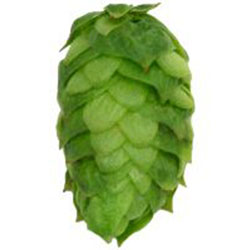Receptas / "All Day IPA"
Informacija
Kiekis:
30 litrų
Efektyvumas:
75 %
Stilius:
Aludaris:
Receptas sukurtas:
2016 m. liepos 2 d.
Receptas modifikuotas:
2020 m. birželio 18 d.
Parametrai
|
OG:
1.049
|
|
|
FG:
1.011
|
|
|
ABV:
4.9 %
|
|
|
IBU:
49
|
|
|
EBC:
14
|
|
|
IBU/OG:
1.01
|
dominuoja apynių skonis
|
Fermentuojamos medžiagos
| Pavadinimas | Spalva (EBC) | Kiekis (kg) | Kiekis (%) | |
|---|---|---|---|---|
| Viking Pale Ale salyklas | 6.0 | 5.000 | 76.9 | |
| BEST Caramel Pils salyklas | 5.0 | 0.500 | 7.7 | |
| Viking Avižų salyklas | 6.0 | 0.500 | 7.7 | |
| Viking Caramel 100 EBC | 101.0 | 0.300 | 4.6 | |
| Viking Kvietinis salyklas | 5.0 | 0.200 | 3.1 | |
| 6.500 |
Apyniai
Mielės
| Pavadinimas | Kiekis (g) | Atenuacija (%) | |
|---|---|---|---|
| Fermentis Safale US-05 | 12.0 | 77 |
Pastabos
Founders "All Day IPA" interpretacija (sesijinė, lengva IPA - žinau, kad ABV netraukia iki IPOs, bet toks sumanymas).
Vanduo - RO + mineralai (mineralai tik į mentalą):
https://www.brewersfriend.com/mash-chemistry-and-brewing-water-calculator/?id=54GG2TN
Mineralai į mentalą: 12g Gipso, 1g Epsom salt, 5g Calcium Chloride (15g 33% tirpalo).
Salinimui užpilti 20l 76'C vandens (1:3)
Salinimas: 66-67°C
Virimas: 60 min.
Paskutinius apynius suberti ir išjungti ugnį, leisti pastovėti 1-2 min., tada pradėti išpumpavimą per aušintuvą į fermenterį.
Fermentacija 17~18°C patalpoje
Gazavimas 18°C patalpoje
---
American pale ales can be made with a single infusion mash in the 150–154 °F (66–68 °C) range. For this style, more complex mashes are just a waste of time.
---
Carbonate the beer more than you would an English pale ale, but less than for an American Pilsner. You want the carbonation to bubble up the hop aroma and perhaps add a little carbonic “bite,” but you don’t want the beer to be too gassy. Between 7/8 and 1 cup of corn sugar is about right for priming 5 gallons (19 L).
---
28 g) of aroma hops, more if you don’t dry hop. Dry hop additions in the 0.75–1.5 oz. (21–43 g) range will give you a nice level of dry hop aroma. Increase all these levels by 0.25–0.50 oz. (7–14 g) for IPAs and at least that much again for double IPAs.When dry hopping, whole hops are easier to use than pellets, which can form a sludge at the bottom of your keg or secondary fermenter. Always use green, fresh-smelling dry hops or your hop aroma will suffer. Contact time can be as short as 3 days to as long as the keg lasts, but longer contact times may impart a grassy edge to the beer.As with bittering hops, use your taste buds to determine if you’re getting the level of flavor and aroma from late kettle additions and dry hopping as you’d like. Also, keep in mind that there are other ways to introduce hop flavor and aromas into hoppy American-style ales. These include hopbacks, that filter hot wort through a bed of hops on the way to the chiller, and Randalls, a hop filter that resides between your keg and your glass.
Vanduo - RO + mineralai (mineralai tik į mentalą):
https://www.brewersfriend.com/mash-chemistry-and-brewing-water-calculator/?id=54GG2TN
Mineralai į mentalą: 12g Gipso, 1g Epsom salt, 5g Calcium Chloride (15g 33% tirpalo).
Salinimui užpilti 20l 76'C vandens (1:3)
Salinimas: 66-67°C
Virimas: 60 min.
Paskutinius apynius suberti ir išjungti ugnį, leisti pastovėti 1-2 min., tada pradėti išpumpavimą per aušintuvą į fermenterį.
Fermentacija 17~18°C patalpoje
Gazavimas 18°C patalpoje
---
American pale ales can be made with a single infusion mash in the 150–154 °F (66–68 °C) range. For this style, more complex mashes are just a waste of time.
---
Carbonate the beer more than you would an English pale ale, but less than for an American Pilsner. You want the carbonation to bubble up the hop aroma and perhaps add a little carbonic “bite,” but you don’t want the beer to be too gassy. Between 7/8 and 1 cup of corn sugar is about right for priming 5 gallons (19 L).
---
Hops Hops Hops
The thing that sets American pale ales apart from most other beers is the hops. American pales generally have fairly high bittering levels, but they also show lots of hop flavor and aroma from late kettle additions or dry hopping.You can use brewing software to calculate the estimated IBUs in your beer, but keep in mind this is just an estimate. Taste your beer and adjust the amount of bittering hops as needed.Peter Zien, of AleSmith Brewing Company says, “The key figure is the bittering unit to gravity unit (BU:GU) ratio. It’s been my experience that a ratio of 1.0 is a good starting point for a hoppy American pale ale.”Since you will be adding a relatively large amount of hops late in the boil, and hops absorb wort, most brewers use high-alpha hops (over 8% alpha acids) for their bittering.Late addition hops are sometimes divided into flavor hops (added with around 15 minutes left in the boil) and aroma hops (added near the end of the boil). To get the proper level of hop flavor in a American pale ale, you should add 0.5–1.0 oz. (14–28 g) per 5 gallons (19 L) of flavor hops to your wort. You should likewise add another 0.5–1.0 oz. (14–28 g) of aroma hops, more if you don’t dry hop. Dry hop additions in the 0.75–1.5 oz. (21–43 g) range will give you a nice level of dry hop aroma. Increase all these levels by 0.25–0.50 oz. (7–14 g) for IPAs and at least that much again for double IPAs.When dry hopping, whole hops are easier to use than pellets, which can form a sludge at the bottom of your keg or secondary fermenter. Always use green, fresh-smelling dry hops or your hop aroma will suffer. Contact time can be as short as 3 days to as long as the keg lasts, but longer contact times may impart a grassy edge to the beer.As with bittering hops, use your taste buds to determine if you’re getting the level of flavor and aroma from late kettle additions and dry hopping as you’d like. Also, keep in mind that there are other ways to introduce hop flavor and aromas into hoppy American-style ales. These include hopbacks, that filter hot wort through a bed of hops on the way to the chiller, and Randalls, a hop filter that resides between your keg and your glass.











domaso
2016 m. Rugsėjo 23 d.AntaKalnietis
2016 m. Rugsėjo 24 d.GiN > Norėjau tik pasakyti, kad jei, tarkim, iš bedos 6 kg Pale Ale galima pakeisti 5 kg Pilseno + 1 kg Miuncheno. Aišku, nebus identiška, bet arčiau to. Ar čia turėjai omeny, kad pievas šneku dėl šio konkretaus recepto/stiliaus?
domaso
2016 m. Rugsėjo 24 d.Aš pats nesu ragavęs to alaus, tik mačiau, kad visi labai gerai vertina, tai galvoju reikia pabandyt :)
GiN
2016 m. Rugsėjo 25 d.AntaKalnietis
2016 m. Rugsėjo 25 d.